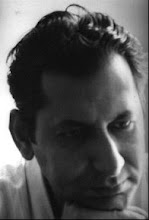Al-Buraq (The Lightning) was a Horse?
Why Mehdi Hasan thought it was a horse surprised me, too! I know it is the generally accepted form among Muslims, but a well-read journalist should understand that there is no way that he can prove something like this from the Qur'an, a book all Muslims support and accept. It can always be questioned by others, but many non-Muslims will understand his belief if the Qur'an says so and allow it … just as Muslims allow a Christian to believe that Christ came back from the dead in 3 days, though, according to many of them he was 'taken up by God' as they understood it from the Qur'an. Of course, some differ here, too.
Wikipedia says this: While the Buraq is almost always portrayed with a human face in far-eastern and Persian art, no Hadiths or early Islamic references allude to it having a humanoid face. This, which found its way into Indian and Persian Islamic art, may have been influenced by a misrepresentation or translation from Arabic to Persian of texts and stories describing the winged steed as a "... beautiful faced creature."
A translation of Sahih al-Bukhari (5:58:227) describes Al-Buraq this way (as the Prophet said): "Then a white animal which was smaller than a mule and bigger than a donkey was brought to me."
When God ordered Gabriel to carry with him the Buraq for the Prophet to ride, he went to the Paradise of buraqs and there he found forty million buraqs. Every buraq had a crown on its forehead inscribed with the words: "There is no god except God, and Muhammad is His Messenger." Under it was written: "Believe in Me, in My angels, in My holy books, and in My prophets." Gabriel saw among them a buraq who secluded himself and who sat alone crying. Gabriel came to him and asked him why he was in such a state. The Buraq answered: "I heard the name of Muhammad forty thousand years ago, and my yearning for him has prevented me from eating and drinking." Gabriel chose that buraq and he took him.The Buraq had the body of a horse but the face of a human being, with big black eyes and soft ears. His color was that of a peacock whose plumage was set with red rubies and corals, on which sat a white head of musk on a neck of amber. His ears and shoulders were of pure white pearls attached with golden chains, each chain decorated with glittering jewels. His saddle was made of silk lined with silver and gold threads. His back was covered with green emerald and his halter was pure peridot.
Labels: Art, Books, Education, Literature, People, Religion, Tehelka, Twitter








0 Comments:
Post a Comment
<< Home